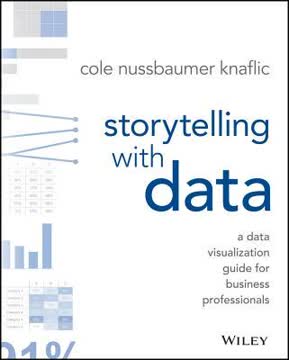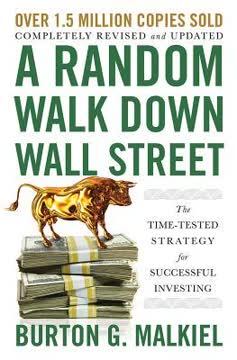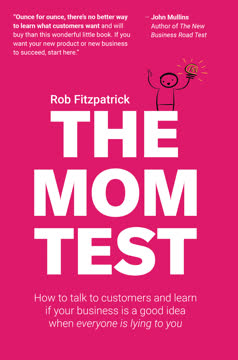Key Takeaways
1. Data-driven marketing is the key to bridging the marketing divide
"Just because the campaign component is not working well does not mean we should not do it at all. We need to reevaluate how we are doing the marketing and look for opportunities to improve the effectiveness."
Marketing divide exists. Research shows a clear divide between organizations that embrace data-driven marketing and those that don't. Leaders who leverage data and metrics in their marketing activities consistently outperform laggards in terms of financial performance, market share, and brand equity.
Start small, scale fast. To bridge this divide, organizations should:
- Begin with simple metrics and Excel analysis
- Focus on collecting the right data (20% that provides 80% of value)
- Demonstrate quick wins to gain executive support
- Gradually build infrastructure for more advanced analytics
Cultural shift required. Implementing data-driven marketing often requires overcoming organizational resistance. Key strategies include:
- Aligning incentives with results, not just activities
- Providing training on new tools and approaches
- Creating a "data-driven marketing culture" through consistent messaging and example-setting by leadership
2. Essential metrics form the foundation of effective marketing measurement
"If you can measure marketing, you can control it and radically improve performance."
15 essential metrics. The book identifies 15 key metrics across various marketing activities:
- Brand awareness
- Test-drive
- Churn
- Customer satisfaction (CSAT)
- Take rate
- Profit
- Net present value (NPV)
- Internal rate of return (IRR)
- Payback
- Customer lifetime value (CLTV)
- Cost per click (CPC)
- Transaction conversion rate (TCR)
- Return on ad dollars spent (ROA)
- Bounce rate
- Word of mouth (WOM)
Balanced scorecard approach. Effective measurement requires a balanced view across multiple dimensions:
- Strategic (forward-looking): Brand awareness, CSAT, test-drive
- Tactical (backward-looking): Financial metrics, churn
- Operational: Take rate, campaign efficiency
Design for measurement. To implement effective measurement:
- Define clear objectives and key performance indicators (KPIs) before launching campaigns
- Create scorecards that align with business goals
- Collect data at regular intervals throughout the campaign lifecycle
3. Financial metrics quantify over 50% of marketing activities
"Finance is the language of business, and marketers who learn to speak this language gain respect in the boardroom."
Applicable to demand generation. Financial metrics are particularly useful for:
- Short-term promotional campaigns
- New product launches
- Loyalty marketing with measurable repeat purchases
Essential financial metrics:
- Profit: Revenue - Cost
- Net Present Value (NPV): Discounted future cash flows
- Internal Rate of Return (IRR): Rate at which an investment breaks even
- Payback: Time required to recoup investment
ROMI framework. To calculate return on marketing investment:
- Define base case (business as usual)
- Estimate upside from new marketing initiative
- Calculate incremental cash flows
- Perform sensitivity analysis to account for uncertainty
4. Customer Lifetime Value (CLTV) is crucial for value-based marketing
"All customers are not equal."
CLTV calculation. Customer Lifetime Value represents the net present value of a customer's future profit potential, accounting for:
- Acquisition cost
- Projected margins
- Retention probability
- Discount rate
Value-based strategies. CLTV enables more effective:
- Customer segmentation
- Resource allocation
- Targeted marketing campaigns
- Retention efforts for high-value customers
Balancing short and long-term. Effective value-based marketing requires:
- Identifying and nurturing high-potential customers
- Managing costs for low-value or negative-value customers
- Developing strategies to transition medium-value customers to high-value status
5. Internet marketing metrics drive performance in the digital age
"Internet marketing is the Wild West: the Internet is the new frontier for marketing and is not yet completely figured out."
Search Engine Marketing (SEM) optimization. Key metrics include:
- Cost per Click (CPC)
- Click-Through Rate (CTR)
- Transaction Conversion Rate (TCR)
- Return on Ad Dollars Spent (ROA)
Beyond clicks. Effective digital marketing also considers:
- Bounce rate: Percentage of visitors who leave quickly
- Attribution modeling: Understanding the full customer journey
- Word of Mouth (WOM): Tracking social media engagement and shares
Emerging trends. Stay ahead with:
- Hypertargeting in social media
- Real-time bidding and optimization
- Integration of online and offline marketing data
6. Agile marketing enables rapid adaptation and performance improvement
"If you are going to fail, fail fast."
Near-time data collection. Gather performance data on a timescale shorter than the campaign duration:
- For a 10-month campaign, collect data at least monthly
- For a 10-week campaign, collect weekly data
Designed for measurement. Before launching campaigns:
- Define clear success criteria and metrics
- Plan data collection methods
- Establish decision points for potential course corrections
Act on insights. Be prepared to:
- Amplify successful elements of a campaign
- Modify underperforming aspects
- Terminate failing campaigns early to reallocate resources
7. Analytics and event-driven marketing deliver targeted, timely offers
"Wow, that product is exactly what I need!"
Three essential approaches:
- Propensity modeling: Predicting likelihood to purchase
- Market basket analysis: Identifying product affinities
- Decision trees: Segmenting customers based on multiple variables
Event-driven marketing. Leverage analytics to:
- Identify trigger events (e.g., life changes, product usage milestones)
- Develop relevant, timely offers
- Automate marketing responses to customer actions
Measurable impact. Companies implementing advanced analytics report:
- Increased response rates (often 3-5x improvement)
- Higher customer satisfaction
- Improved retention of high-value customers
8. Infrastructure investment must align with data-driven marketing strategy
"Data-driven marketing technology is too important to leave to the technologists."
Scale considerations. Infrastructure needs depend on:
- Customer base size
- Complexity of business requirements
- Desired analysis speed (e.g., real-time vs. batch processing)
Phased approach. Start small and scale:
- Begin with Excel analysis for core metrics
- Implement centralized marketing database
- Gradually build out enterprise data warehouse (EDW) capabilities
- Add advanced analytics and real-time decisioning as needed
Avoid common pitfalls:
- Ensure executive sponsorship and alignment with business goals
- Address data quality issues early
- Plan for scalability from the outset
- Balance immediate wins with long-term architecture needs
9. Core marketing processes differentiate leaders from laggards
"The difference in good and great for marketing is less subtle."
Four essential capabilities:
- Selection: Documented process for campaign funding and alignment
- Portfolio view: Holistic approach to campaign synergies
- Monitoring: Consistent measurement and evaluation
- Adaptive learning: Applying insights to future campaigns
Technology enablement. While technology alone doesn't drive performance, it supports these core processes through:
- Centralized data management
- Analytics and reporting tools
- Marketing resource management (MRM) systems
Phased implementation. Organizations typically progress through three stages:
- Defined: Basic processes and centralized tracking
- Intermediate: Specific objectives, advanced metrics, and data warehouse integration
- Advanced: Automated tools, portfolio management, and agile execution
Last updated:
FAQ
What's Data-Driven Marketing about?
- Focus on Metrics: Data-Driven Marketing by Mark Jeffery emphasizes 15 essential marketing metrics crucial for improving performance and justifying marketing spending.
- Data-Driven Strategy: It provides a framework for developing a data-driven marketing strategy, helping organizations overcome common obstacles in implementing these practices.
- Real-World Examples: The book uses case studies from various companies to illustrate how effective data-driven marketing can lead to better financial performance.
Why should I read Data-Driven Marketing?
- Improve Marketing Performance: The book is designed for marketers who want to enhance their marketing effectiveness and demonstrate the value of their efforts.
- Practical Tools and Templates: It includes downloadable Excel templates for calculating key metrics, making it easier for readers to apply the concepts in their own organizations.
- Competitive Advantage: Understanding and implementing the principles in the book can provide a competitive edge in today’s data-rich marketing environment.
What are the key takeaways of Data-Driven Marketing?
- 15 Essential Metrics: The book identifies 15 key metrics that marketers should focus on, including brand awareness, customer lifetime value (CLTV), and return on marketing investment (ROMI).
- Overcoming Obstacles: It outlines five major obstacles to implementing data-driven marketing and provides strategies to overcome them, such as starting small and focusing on quick wins.
- Linking Marketing to Financial Performance: The author emphasizes the connection between effective marketing measurement and improved financial outcomes.
What are the best quotes from Data-Driven Marketing and what do they mean?
- “Half the money I spend on marketing is wasted—the problem is I don’t know which half.”: Highlights the challenge of measuring campaign effectiveness and the need for better metrics.
- “If you can measure marketing, you can control it and radically improve performance.”: Emphasizes the importance of measurement in marketing for better decision-making and outcomes.
- “The marketing divide exists between organizations that do data-driven marketing and use marketing metrics and those that do not.”: Underscores the disparity in effectiveness between companies that embrace data-driven strategies and those that do not.
What are the 15 essential marketing metrics discussed in Data-Driven Marketing?
- Brand Awareness: Measures the ability of customers to recall a product or service, crucial for driving initial consideration.
- Test-Drive: Represents the pre-purchase evaluation of a product, indicating future sales potential based on customer engagement.
- Churn: The percentage of customers who stop purchasing, vital for understanding customer loyalty and retention.
- Customer Satisfaction (CSAT): Gauges how likely customers are to recommend a product or service, serving as a leading indicator of future sales.
- Take Rate: The percentage of customers who accept a marketing offer, reflecting the effectiveness of demand generation campaigns.
How does Data-Driven Marketing suggest overcoming obstacles to implementing data-driven strategies?
- Start Small: Focus on collecting the right data and achieving quick wins to build momentum for larger initiatives.
- Conduct Experiments: Run small experiments to isolate variables and understand the impact of marketing efforts.
- Build a Data-Driven Culture: Create a culture that values measurement and accountability for long-term success in data-driven marketing.
What is the significance of Customer Lifetime Value (CLTV) in Data-Driven Marketing?
- Valuable Metric: CLTV quantifies the future profitability of a customer, helping businesses prioritize marketing efforts based on customer value.
- Retention Focus: Understanding CLTV allows companies to develop strategies to retain high-value customers and reduce churn.
- Data-Driven Decisions: Emphasizes using CLTV in marketing decisions to ensure resources are allocated effectively to maximize long-term profitability.
How does Data-Driven Marketing define Return on Marketing Investment (ROMI)?
- Financial Metrics: ROMI is calculated using essential financial metrics such as Net Present Value (NPV), Internal Rate of Return (IRR), and payback period.
- Decision-Making Tool: Provides a framework for analyzing marketing initiatives to determine their financial viability and impact on the business.
- Incremental Cash Flows: Focuses on the incremental cash flows generated by marketing campaigns, allowing marketers to justify their spending based on measurable outcomes.
What is agile marketing according to Data-Driven Marketing?
- Agile Marketing Concept: Described as a strategy that emphasizes flexibility and responsiveness to data, allowing for quick adjustments based on performance.
- Fail Fast Philosophy: Encourages quickly identifying underperforming campaigns and pivoting as needed to minimize wasted resources.
- Real-Time Adjustments: Allows for real-time adjustments to campaigns, enhancing their effectiveness through continuous monitoring of performance metrics.
What are the three essential approaches to analytic marketing in Data-Driven Marketing?
- Propensity Modeling: Predicts the likelihood of a customer purchasing a specific product based on historical data, helping tailor offers to individual customers.
- Market Basket Analysis: Identifies products frequently purchased together, allowing for effective cross-selling strategies and insights into customer purchasing behavior.
- Decision Trees: Used to segment customers based on behaviors and characteristics, helping identify high-risk customers and tailor retention strategies.
What role does technology play in Data-Driven Marketing?
- Support for MCM Processes: Technology is essential for supporting marketing campaign management processes, enabling data collection, analysis, and reporting.
- Data Warehousing: Discusses the importance of data warehousing in consolidating customer data from various sources for comprehensive analysis.
- Automation Tools: Automation tools, such as marketing resource management systems, streamline marketing processes, enhancing efficiency and allowing focus on strategy.
What is the Creative X-factor in Data-Driven Marketing?
- Integration of Creativity and Data: Refers to combining creative concepts with data-driven strategies to enhance campaign performance.
- Examples of Success: Provides examples like Blendtec's "Will It Blend?" campaign, showcasing how creative marketing can drive sales and capture audience attention.
- Impact on Performance: Acts as a multiplier for marketing effectiveness, leading to substantial increases in engagement and conversion rates.
Review Summary
Data-Driven Marketing receives mixed reviews, with an average rating of 3.91 out of 5. Readers appreciate its insights on marketing metrics and data analysis, finding it valuable for understanding modern marketing strategies. Many praise its practical examples and actionable advice. However, some critics find it outdated or too basic for experienced marketers. The book is noted for its comprehensive coverage of marketing metrics but criticized for occasionally being dry or repetitive. It's recommended for marketers seeking to improve their data-driven decision-making skills.
Similar Books










Download PDF
Download EPUB
.epub digital book format is ideal for reading ebooks on phones, tablets, and e-readers.




